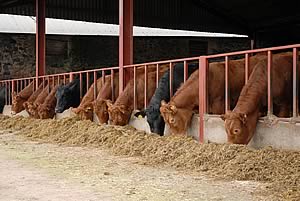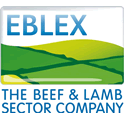 |
|||||||||
|
|||||||||||||||||||
|
|
Cattle Transition to Housing Management Vital this Autumn Managing cattle as well as possible in the transition to housing to minimise stress and health-related growth checks will be more important than ever this autumn to help offset significantly higher input costs, advises EBLEX, the industry body for beef and lamb levy payers.
With variable costs predicted to be 10-20% higher over the coming winter as a result of increased feed, forage and bedding costs, maintaining optimum growth rates and feed conversion efficiencies in housed stock will be particularly critical. Yet even light infections of pneumonia are known to reduce daily liveweight gains significantly, as are growth checks from nutritional or environmental stresses. EBLEX identifies three key areas for management attention to ensure cattle performance is not compromised as they come in this autumn - transition feeding, healthcare and grouping and housing condition. Cattle going onto an indoor finishing diet will benefit from the progressive introduction of supplementary feed at grass both to maintain growth rates on autumn grass of declining energy density and to acclimatise their rumens to the finishing diet. Stock that are to be finished before Christmas and suckler calves should be prioritised for particular care and attention at this stage. In addition to gradual dietary change, procedures like castration, weaning, worming and vaccination should be undertaken one at a time wherever possible to avoid the multiple stresses that can easily precipitate health problems and unnecessary growth checks. Pneumonia vaccinations, in particular, need to be undertaken sufficiently ahead of housing and other stresses to provide sufficient protection. In maintaining optimum cattle health and performance it is equally important to control any worm and fluke infections picked-up during the grazing season. Blanket anthelmintic treatment is not always either warranted or desirable. However, careful monitoring of grazing conditions supported, if necessary, by analysis of dung or blood samples will allow treatment to be targeted with the right degree of precision for the greatest value. Careful grouping of animals by size, sex and origin, and correct stocking rates for the accommodation and bedding available will do much to reduce social stresses at housing as well as pneumonia risk. It is essential to have sufficient air space per animal, provide generous natural ventilation and keep wet areas to a minimum to avoid excessive humidity build-up. While frequent bedding is important, dust levels must be minimised too. A handy Beef Better Returns Housing Manual providing a valuable checklist for housing management and improvement is available from EBLEX free of charge to levy payers at www.eblex.org.uk by e-mailing brp@eblex.co.uk or calling 0870 2418829.
|
||||||||||||||||||

|
|
||||||||||||||||||
| home | agri-services | pedigree
pen | news | dairy | beef | machinery property | organisations | site map |
|||||||||||||||||||

